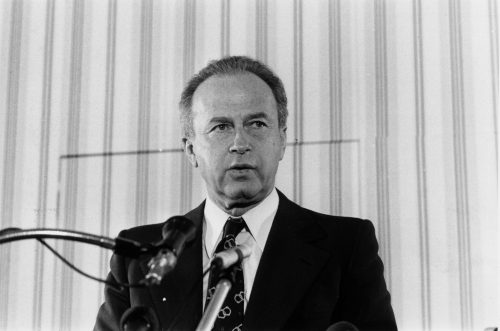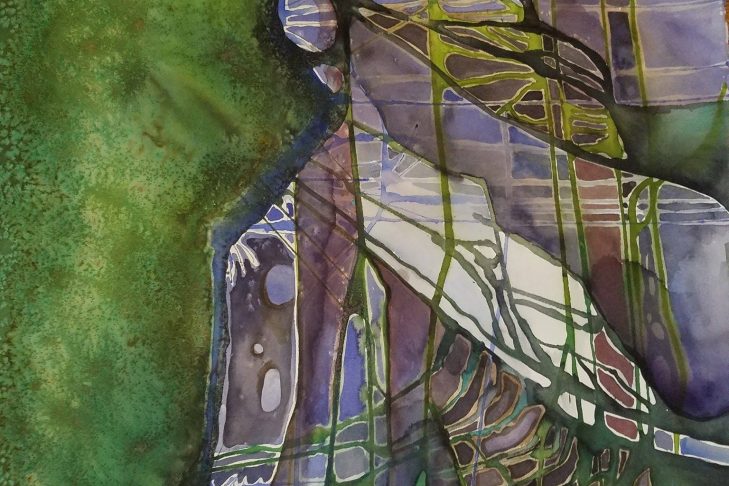On Nov. 4, 1995, a lone gunman named Yigal Amir murdered Israel’s Prime Minister Yitzhak Rabin. Amir, a Jewish right-wing extremist, reset the course of Israeli history with what was arguably one of the most game-changing assassinations in the world. Just two years earlier, Rabin had set aside prejudgments and even hostility to shake hands with Yasser Arafat, the leader of the Palestinian Liberation Organization and one of the terrorists that Rabin spent a lifetime battling both on the battlefield and in the Knesset. With President Bill Clinton symbolically in the middle of the two men, they agreed to a plan for limited self-rule in the territories.
The next year, Rabin returned to the White House with King Hussein of Jordan to end the state of war that existed between the two countries since Israel’s founding in 1948. A year later Rabin was dead and the new Prime Minister Benjamin Netanyahu had all but jettisoned Rabin’s efforts for peace. Twenty-one years later Netanyahu is still in office and the peace that Rabin gave his life for seems to have died with him.
Yehuda Yaakov, consul general of Israel to New England, is more optimistic about Israel’s prospects for peace. Yaakov was on hand last week to introduce a new art show in Mayyim Hayyim’s art gallery called “Yitzhak Rabin: My Inspiration.” Three Israeli-American artists remember Rabin with depictions of their hopes for peace in Israel. Yaakov said commemorating Rabin’s yartzheit, or the anniversary of his death, has been a priority for him. “Over time we have sought ways to do that commemoration to a wider community, and this [art show] dovetails with that idea,” he said.
Anita Diamant, founding president of Mayyim Hayyim and chair of the mikveh’s art committee, noted that having an art gallery housed in Mayyim Hayyim is critical to the organization’s mandate. “One of our seven principles for having a mikveh,” Diamant said at the opening, “is hiddur mitzvah—the making of Jewish life beautiful. At Mayyim Hayyim we try and pay attention to our surroundings so that everything is beautiful and welcomes you and inspires you.”
The Yitzhak Rabin show is among the two to three exhibits presented in a given year in Mayyim Hayyim’s gallery. The space, which also serves the community as a cultural and education center, frequently doubles as a classroom. Mayyim Hayyim offers over 100 educational programs each year, half of which are designed for school-age children. “When kids will come in here it’ll be a great opportunity to talk about Israeli art and the connection between American and Israeli communities,” said Diamant.

The people who enter Mayyim Hayyim in the next couple of months will have the opportunity to see the work of Nira Chorev, Irit Hamami and Inna Zhukovsky Zilber. Chorev, who works in mixed media, cites memory as an underlying theme of her art. Her connection to Rabin is personal—her father and the late prime minister were best friends, and the families celebrated holidays together. “At first I wanted to do a portrait of Rabin,” Chorev said at the opening. “But everything changed for me after Rabin’s assassination. This is the first political piece I’ve done.” Her unnamed work, grounded in the natural world of trees, bears words in Hebrew that translate as, “The land will never be at peace.”
Hamami works with silver and copper, as well as gems, to create jewelry. Her nod to peace can be seen in a necklace that features two birds against the backdrop of a rising sun. Hamami says she was moved to make the necklace after hearing the song “Shir LaShalom (A Song for Peace).” A copy of the lyrics was found in Rabin’s coat pocket the day he was assassinated. Hamami’s artist statement notes that “the necklace represents all the important things that Rabin wished for and that the world still wishes for.”
Zhukovsky Zilber’s watercolor abstracts are layered with textures, such as salt. The Needham-based artist, who was born in the former Soviet Union, came with her family to Israel in the early 1990s. At the time of Rabin’s assassination, she was an art student in Israel. “My work,” she said, “connects to a time of hope before Rabin was killed. As a student in the 1990s I was so hyped up about peace.”
Next May, the Consulate General of Israel to New England will be part of Israel’s 50-year anniversary celebration of the reunification of Jerusalem. Noted Yaakov: “It was a reacquisition of access to our holy sites, and Yitzhak Rabin fought for Jerusalem. And when I think about Jerusalem and Rabin in that context, I also think about the issue of unity.”
This post has been contributed by a third party. The opinions, facts and any media content are presented solely by the author, and JewishBoston assumes no responsibility for them. Want to add your voice to the conversation? Publish your own post here. MORE



